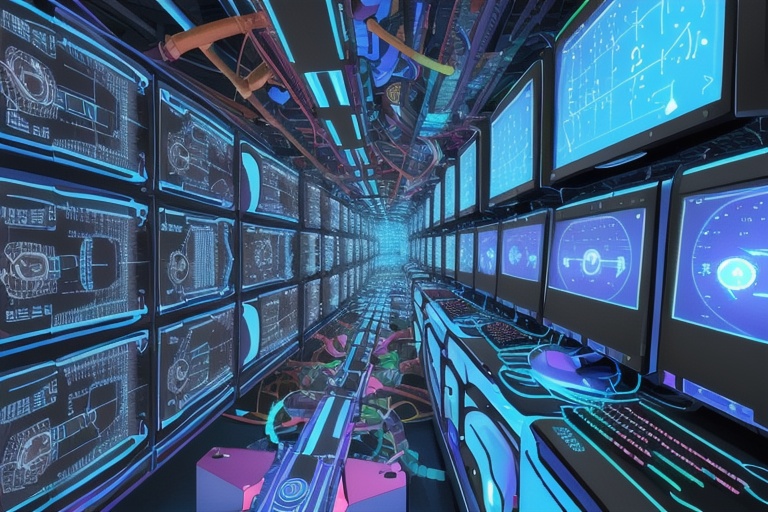The pace of advancement in technology is nothing short of astounding, and nowhere is this more evident than in the realms of programming, artificial intelligence (AI), and machine learning (ML). For those keen on maintaining a competitive edge or simply curious about future trends, it is vital to stay abreast of the developments that shape these dynamic fields. This article aims to provide a broad overview of the significant trends that are sculpting the technological future, assess their impacts, and examine their potential to transform our relationship with digital systems.
The pace of advancement in technology is nothing short of astounding, and nowhere is this more evident than in the realms of programming, artificial intelligence (AI), and machine learning (ML). For those keen on maintaining a competitive edge or simply curious about future trends, it is vital to stay abreast of the developments that shape these dynamic fields. This article aims to provide a broad overview of the significant trends that are sculpting the technological future, assess their impacts, and examine their potential to transform our relationship with digital systems.
The Rise of Python in Programming
Programming languages are the backbone of technology; they are the tools that enable developers to construct intricate software applications and digital systems. Over time, Python has ascended as a language of choice for many due to its user-friendly nature and vast array of available libraries and frameworks. It's not just its simplicity that's appealing; it's also Python's powerful capabilities in data handling and analysis that have gained it significant traction in the artificial intelligence and machine learning sectors. A language that began as a favorite for beginners has now become instrumental in cutting-edge research and development.
The Advent of Human-Like AI Through ChatGPT
Artificial intelligence is no longer a sci-fi concept but a tangible reality taking shape in various forms. Among the many advancements, the arrival of conversational AI, epitomized by ChatGPT from OpenAI, is noteworthy. This conversational model enables machines to interact with users in a way that replicates human conversation, going beyond the programmed responses of traditional chatbots. The implications for customer service and user experience are extensive, with enhanced support and a level of personalization that seemed unattainable just a few years ago.
Computer Vision and Apple's Pioneering Technology
When we consider AI's capabilities, its intersection with computer vision is one of the most thrilling areas. Apple's Vision Pro serves as a prime demonstration of how far we've come, allowing machines not just to "see" but to analyze and comprehend visual data. The technology deploys sophisticated algorithms to process images and has applications that span autonomous vehicles, healthcare diagnostics, and even in the recognition of individuals and objects in images. As the technology matures, the possibilities for machines to perceive the world in a similar way to humans expand dramatically.
The Transformative Role of Machine Learning
Machine learning stands as a powerful subset of AI, one that can sift through massive datasets to find patterns and learn over time. Its influence stretches across numerous sectors, from finance to healthcare. By deploying ML algorithms, businesses can enhance their capability to predict trends, automate routine tasks, and make nuanced decisions at scale. As the technology evolves, its role in powering sophisticated, adaptive systems will only become more pronounced, further integrating into the fabric of our daily lives.
The Emergence of Low-Code and No-Code Platforms
Another noteworthy trend in software development is the rise of low-code and no-code platforms. These tools are revolutionizing how applications are created by lowering the entry threshold for both developers and those with no prior technical background. They represent a pivotal movement towards inclusivity in tech, offering a swift and simpler route to application development and automation. This burgeoning trend democratizes the creation process, letting more individuals turn their digital concepts into reality.
The Ramifications of Technological Trends
Understanding and embracing the latest trends in programming, AI, and ML isn't just advantageous; it's imperative for businesses and individuals alike. Python's ascension highlights the ongoing need for accessible yet powerful programming languages. Breakthroughs in AI and ML, such as ChatGPT and Apple's Vision Pro, are redefining our interactions with machines and enhancing our world in unanticipated ways. Meanwhile, machine learning's growing impact is seen in its ability to drive smarter automation and informed decisions across a spectrum of industries.
The burgeoning popularity of low-code and no-code platforms underscores a movement towards more accessible technology, enabling innovation at a hitherto unseen pace. By integrating these trends into our lives and workflows, we unlock the potential to enhance efficiency, drive innovation, and ultimately forge a superior world.
The subsequent articles in this series will delve into the specifics of each trend, exploring how they find utility across different sectors, analyzing their advantages, and considering the challenges they present. Join us as we navigate the captivating landscape of programming, AI, and ML, unlocking insights that promise to enlighten and inspire.
Information for this article was gathered from the following source.


